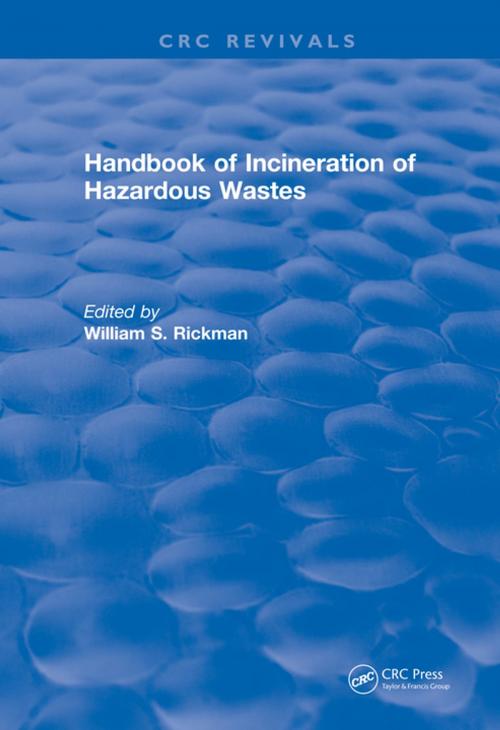Handbook of Incineration of Hazardous Wastes (1991)
Nonfiction, Science & Nature, Technology, Engineering, Chemical & Biochemical| Author: | William S. Rickman | ISBN: | 9781351362993 |
| Publisher: | CRC Press | Publication: | November 22, 2017 |
| Imprint: | CRC Press | Language: | English |
| Author: | William S. Rickman |
| ISBN: | 9781351362993 |
| Publisher: | CRC Press |
| Publication: | November 22, 2017 |
| Imprint: | CRC Press |
| Language: | English |
Hazardous waste incineration technologies have been developed to meet the needs of a rapidly growing market that has been created by the proliferation of hazardous waste in modern society. These hazardous wastes are continuously produced as by-products of many industries. Vast stockpiles of hazardous or toxic wastes are currently residing in insecure landfills, thus imperiling our drinking water supplies. This handbook is written with the user in mind. An in-depth review of regulatory and technical requirements is presented with later sections regarding permitting and operation of incineration facilities. A comprehensive description of established and emerging incinerator technologies is included along with a number of alternatives. One of the key sections involves a detailed procedure for choosing an incinerator for a specific job, including engineering calculations and going through the bid process. Rationale for whether to buy or lease incineration equipment is included as well as details on trial burns, permitting strategies, and startup and operation of incinerators. A number of typical case histories of incinerators are presented for such diverse applications as cleaning up individual sites with transportable units, stationary facilities for in-house wastes, and incinerator ships. Appendices provide a convenient reference to physical properties, combustion parameters, detailed equipment performance nomographs and several sample permits including RCRA, TSCA and local permit applications. In summary, this handbook provides a single reference point for the potential user of an incinerator as well as a valuable source of design data for incinerator vendors, consultants and regulators.
Hazardous waste incineration technologies have been developed to meet the needs of a rapidly growing market that has been created by the proliferation of hazardous waste in modern society. These hazardous wastes are continuously produced as by-products of many industries. Vast stockpiles of hazardous or toxic wastes are currently residing in insecure landfills, thus imperiling our drinking water supplies. This handbook is written with the user in mind. An in-depth review of regulatory and technical requirements is presented with later sections regarding permitting and operation of incineration facilities. A comprehensive description of established and emerging incinerator technologies is included along with a number of alternatives. One of the key sections involves a detailed procedure for choosing an incinerator for a specific job, including engineering calculations and going through the bid process. Rationale for whether to buy or lease incineration equipment is included as well as details on trial burns, permitting strategies, and startup and operation of incinerators. A number of typical case histories of incinerators are presented for such diverse applications as cleaning up individual sites with transportable units, stationary facilities for in-house wastes, and incinerator ships. Appendices provide a convenient reference to physical properties, combustion parameters, detailed equipment performance nomographs and several sample permits including RCRA, TSCA and local permit applications. In summary, this handbook provides a single reference point for the potential user of an incinerator as well as a valuable source of design data for incinerator vendors, consultants and regulators.















